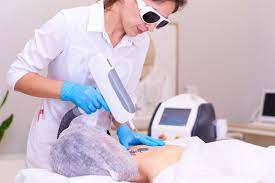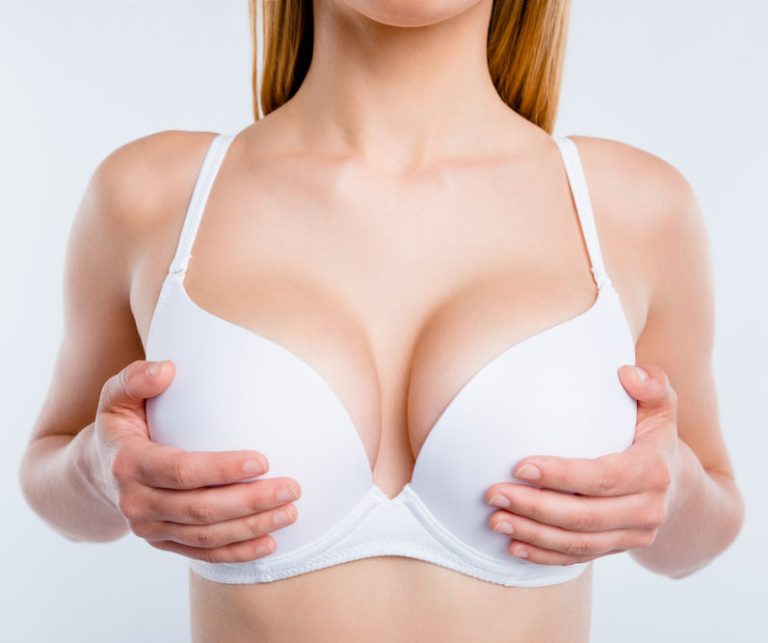Natural Contours: Enhancing Lip Shape with Fat Transfer
Posted on: April 14, 2024
Fat transfer to lips, a beauty technique with roots deep in history, has evolved from simple beginnings to a sophisticated method for enhancing natural allure. This procedure, leveraging the body’s own resources, offers an alternative to synthetic fillers, marrying safety with effectiveness. It stands as a testament to the ingenuity in cosmetic enhancement, reflecting a shift towards more organic and harmonious approaches in beauty treatments. As we delve into this topic, we’ll explore how fat transfer not only plumps the lips but also integrates seamlessly with the body’s natural processes, offering a dual benefit of lip enhancement and fat reduction elsewhere. This blend of aesthetic appeal and practicality underscores why it continues to captivate those seeking subtle yet impactful enhancements.
Key Takeaways
- Fat transfer to lips offers a natural alternative to synthetic fillers for those seeking lip augmentation, leveraging your body’s own fat to enhance lip volume and shape.
- Before undergoing a fat transfer procedure, it’s essential to prepare by consulting with a qualified plastic surgeon to understand the process, risks, and expected outcomes.
- The fat transfer process involves extracting fat from one part of your body, purifying it, and then injecting it into your lips, which requires precise technique and expertise.
- Post-procedure recovery and aftercare are crucial for optimal results; follow your surgeon’s advice closely regarding rest, medication, and activity levels to ensure a smooth healing process.
- One of the major benefits of choosing fat transfer over synthetic fillers is its potential for longer-lasting results, as well as the reduced risk of allergic reactions since it uses your own body tissue.
- Ideal candidates for fat transfer to the lips are generally those in good health, with realistic expectations, and who have sufficient fat reserves for the procedure.
Understanding Lip Augmentation
Lip Enhancement
Lip augmentation enhances lip volume and shape. It’s a procedure many seek for fuller lips.
Fat transfer offers a natural solution. This method uses the patient’s fat, making it biocompatible and reducing rejection risks. Patients prefer this for its natural feel and longevity.
Fat Transfer Method
This technique involves harvesting fat from one body part and injecting it into the lips. The process is meticulous, requiring precision and skill.
It starts with liposuction from an area with excess fat. The fat is then purified before being carefully injected into the lips. This method not only plumps the lips but also improves their overall appearance.
Professional Consultation
Consulting with qualified professionals is crucial. They provide personalized advice based on individual facial structure and desired outcomes.
Experts assess suitability for fat transfer to lips, considering factors like health status and lip condition. They ensure safety and effectiveness throughout the procedure.
Comparing Lip Fillers and Fat Transfer
Longevity Results
Fat transfer offers lasting results. Unlike fillers, it might not need frequent touch-ups. This method uses your own fat, making the enhancement more permanent.
Fillers, though immediate in effect, often require repeat sessions every 6 to 12 months. This can be less cost-effective over time.
Natural Feel
Fat transfer gives lips a more natural feel. Since it’s your tissue, the integration is seamless. Patients report their lips feel soft and normal.
Synthetic fillers can sometimes feel different to the touch. Though technology has improved, they don’t always match the natural texture of lip tissue.
Safety Aspects
Using one’s own fat reduces the risk of allergic reactions. It’s a safer option for those concerned about synthetic materials in their body.
Fillers are FDA-approved and safe but carry a small risk of reaction. Choosing a reputable practitioner minimizes these risks.
Effectiveness Concerns
Both methods effectively achieve fuller lips. However, fat transfer might have variable retention rates. Not all transferred fat survives, which can affect volume consistency.
Fillers offer predictable results immediately after injection. Adjustments are easier with fillers if desired outcomes aren’t met initially.
Preparing for Fat Transfer Procedure
Initial Consultation
Your journey begins with an initial consultation. Here, you discuss your goals and expectations with the surgeon. They will assess your lips and overall facial structure to ensure you’re a good candidate for fat transfer.
Doctors need to understand your medical history during this stage. It’s crucial to disclose any conditions or medications that could affect the procedure’s safety or outcome. This step ensures that your plan is tailored to meet your needs while prioritizing health.
Health Evaluation
Next comes a detailed health evaluation. This assessment further ensures your eligibility for the procedure. The surgeon might request blood tests or other exams to check your overall wellness.
This phase is vital for identifying any potential risks. It helps in making informed decisions about proceeding with the fat transfer.
Lifestyle Adjustments
Making some lifestyle adjustments is often recommended before undergoing fat transfer to lips. Smokers are advised to quit as smoking can hinder healing and affect the final result.
You should also avoid certain medications and supplements that can increase bleeding risk, such as aspirin or fish oil, weeks before the procedure. A balanced diet and proper hydration are encouraged to promote better recovery.
Medication Review
A thorough review of your current medications is essential. Some medications may need to be paused or adjusted leading up to the surgery.
This precaution minimizes complications during and after the procedure. Always consult with both your surgeon and primary care physician when making changes to medication regimens.
Final Preparations
In the days leading up to your appointment, follow all instructions provided by your surgeon closely. These may include fasting guidelines if anesthesia is used during fat harvesting.
Prepare a comfortable recovery area at home where you can rest and heal post-procedure. Ensure you have someone ready to drive you home after the surgery, as you won’t be able to do so yourself.
Detailing the Fat Transfer Process
Harvesting Fat
The first step in enhancing your lips through fat transfer involves harvesting fat from another part of your body. Common source areas include the abdomen, thighs, or buttocks.
Doctors use a specialized technique to ensure minimal discomfort and preserve the quality of the fat cells. They carefully extract the fat using a syringe or a small tube called a cannula.
Purifying Fat
Once harvested, the fat undergoes purification. This step is crucial for removing impurities and preparing the fat for injection into the lips.
This process ensures that only healthy, viable fat cells are used. It significantly improves the chances of successful integration into the lip area.
Injection Techniques
Injecting purified fat into the lips requires precision and expertise. Doctors use micro-injection techniques to distribute the fat evenly.
This approach helps achieve a natural look and feel. It minimizes risks and promotes uniformity in volume enhancement.
Procedure Duration
The entire process, from harvesting to injecting, typically takes about one to three hours. Patients often experience mild discomfort but can usually return home on the same day.
Local anesthesia is commonly used to minimize pain during both extraction and injection phases.
Post-Procedure Expectations
After surgery, patients should expect some swelling and bruising in both the donor site and lips. These side effects usually subside within a few weeks.
Most people notice immediate changes in their lip volume, though final results may take several months to emerge as the transferred fat settles and integrates with lip tissues.

Recovery and Aftercare Post-Procedure
Immediate Care
After the fat transfer to lips procedure, patients should follow their surgeon’s advice closely. The first few days are crucial for healing.
Patients may experience swelling and bruising around the lips. It’s essential to apply cold compresses gently to reduce these effects. Surgeons often prescribe medication to manage pain and minimize infection risks. Rest is vital, so patients should avoid strenuous activities that could stress the lips.
Activity Restrictions
Restricting certain activities helps ensure a smooth recovery. For the first week, avoid any action that puts pressure on the lips, including heavy lifting or vigorous exercise.
Patients should also stay hydrated but use a straw for drinking to avoid direct contact with the lips. Eating soft foods can prevent discomfort during meals. Following these restrictions enhances healing and maintains the treatment’s results.
Signs of Complications
Recognizing signs of complications early is critical for patient safety. Unusual symptoms such as excessive swelling, intense pain, or signs of infection (redness, warmth, discharge) require immediate attention from the doctor.
Patients must not hesitate to contact their clinic if they notice anything out of the ordinary. Timely intervention can prevent minor issues from becoming serious problems.
Follow-Up Appointments
Follow-up appointments are an integral part of aftercare. They allow the surgeon to monitor healing progress and address any concerns promptly.
During these visits, patients receive personalized advice based on their recovery status. These appointments are opportunities to ask questions about activity levels, lip care techniques, and when it’s safe to resume normal routines.
Long-Term Care
For long-lasting results, patients should maintain healthy habits and protect their lips from extreme conditions. Using sunscreen and moisturizing regularly helps preserve lip volume and skin quality.
Avoiding smoking is also beneficial since it can impair circulation and affect the longevity of fat transfer outcomes. Patients should continue consulting their surgeon for advice tailored to their specific needs over time.
Benefits of Choosing Fat Transfer
Natural Results
Fat transfer to the lips offers a natural look and feel, distinguishing it from other augmentation methods. Patients appreciate their enhanced yet subtle lip volume.
The procedure utilizes your body fat, ensuring compatibility. This decreases the risk of adverse reactions significantly. The lips feel soft, moving naturally with facial expressions.
Lower Allergic Risk
One of the standout advantages is the reduced chance of allergic reactions. Since the filler material comes from your own body, it’s inherently safer than synthetic alternatives.
This benefit makes fat transfer an excellent choice for those with sensitive systems or concerns about foreign substances in their bodies.
Lasting Enhancement
Patients seeking a more permanent solution find solace in fat transfer. Unlike temporary fillers, which require frequent touch-ups, this method promises longer-lasting results.
Over time, some of the transferred fat integrates with the existing tissues, maintaining volume for years. This longevity makes it a cost-effective option in the long run.
Dual Benefit
Fat transfer not only enhances the lips but also slims down another area of your body. It’s a two-in-one procedure that removes unwanted fat from places like the abdomen or thighs.
This dual advantage allows for overall body contouring, adding to its appeal. Patients enjoy improved lip aesthetics while slimming down their donor site, achieving a more balanced figure.
Recovery Synergy
Following recovery and aftercare advice post-procedure maximizes outcomes. Proper care ensures optimal integration of the transferred fat into the lips, enhancing longevity and appearance.
Embracing a healthy lifestyle post-procedure supports both recovery and lasting results. Staying hydrated and avoiding extreme temperatures helps maintain lip volume and skin health.
Longevity of Fat Transfer Results
Lifestyle Impact
Patients often wonder how long the enhanced volume in their lips will last after a fat transfer. It’s crucial to understand that lifestyle plays a significant role. Healthy habits can prolong the results, while certain behaviors might shorten the lifespan of the enhancement.
Regular hydration and a balanced diet support skin elasticity and fat retention. On the other hand, smoking and excessive sun exposure can deteriorate the quality of both skin and transferred fat, leading to quicker absorption by the body.
Absorption Rate
The body’s natural absorption rate also dictates the longevity of fat transfer results. Not all transferred fat cells survive in their new location. Typically, about 50% to 70% of the fat remains permanently, while the rest is reabsorbed.
The initial few months post-procedure are critical as this is when most absorption occurs. After this period, the remaining fat cells tend to stabilize and continue contributing to lip volume for years.
Average Timeframe
Compared to other methods like fillers, fat transfers offer a more durable solution for enhancing lip volume. While fillers often require repeat sessions every 6 to 12 months, fat transfer results can last several years, with many patients enjoying long-term enhancement.
On average, patients can expect their results to last anywhere from three to five years. This timeframe can vary based on individual factors such as age, lifestyle, and how well their body accepts the transferred fat.
Touch-Ups Needed
To maintain desired volume or further enhance their lips’ appearance, some individuals opt for touch-ups. These additional procedures are usually less extensive than the initial transfer and help counteract any natural decrease in volume over time.
Touch-ups might be considered every few years depending on personal preferences and how one’s body adapts to the initial transfer. Consulting with a professional helps determine if and when a touch-up could be beneficial.
Ideal Candidates for Fat Transfer
Health Status
Good overall health is crucial for anyone considering a fat transfer to the lips. Individuals must be free from any chronic conditions that might impair healing or increase surgery risks. They should also have realistic expectations about the outcomes of this procedure.
A plastic surgeon will assess medical history and current health status. This ensures the candidate is fit for surgery. It’s essential that potential candidates do not smoke, as smoking can hinder healing.
Donor Fat Availability
Having enough donor fat is key for a successful transfer. The procedure requires harvesting fat from one part of the body to inject into the lips. Not everyone has sufficient fat cells in areas like the abdomen, thighs, or buttocks.
Candidates need a consultation with a plastic surgeon. The surgeon evaluates if there’s much fat available for harvesting. This step is critical to achieving desired lip volume and shape.
Age Factors
Age can influence both the effectiveness and results of fat transfers. Younger individuals often have more elastic skin and may achieve better results due to better skin tone and healing capacity.
However, age should not be a deterrent. A skilled plastic surgeon can work with individuals of various ages to achieve beautiful results. The key is setting realistic expectations based on individual factors such as skin quality and fat availability.
Safety and Effectiveness of the Procedure
Common Side Effects
Fat transfer to lips is considered a minor procedure with a good safety record. However, like any medical intervention, it comes with potential side effects. Swelling and bruising in the treated area are the most common. These symptoms typically subside within a week.
Patients might also experience temporary numbness or discomfort in the donor or injection site. It’s important for visitors considering this treatment to discuss all concerns with their doctor beforehand.
Professional Experience
The success of fat transfer procedures significantly depends on the experience and expertise of the medical professional performing it. Doctors specializing in cosmetic procedures are more likely to achieve desired outcomes while minimizing risks.
They assess conditions meticulously before recommending fat transfer to lips. This ensures that only suitable candidates proceed with the treatment, safeguarding patient safety and satisfaction.
Effectiveness Studies
Research supports the effectiveness of fat transfer for lip augmentation. Studies highlight improved volume and contour lasting for months or even years post-procedure. Unlike other materials used for lip enhancement, fat is natural, reducing the risk of adverse reactions.
Patients report high satisfaction rates, noting more natural-looking results compared to synthetic fillers. The key lies in selecting medically trained professionals who understand the nuances of facial anatomy and can tailor treatments to individual needs.
Summary
Fat transfer to your lips offers a natural, long-lasting solution for those seeking fuller, more voluptuous lips without the synthetic feel of fillers. You’ve explored the journey from understanding the basics of lip augmentation to diving deep into the fat transfer process, including preparation, recovery, and the benefits it brings. Opting for fat transfer means embracing a procedure known for its safety and effectiveness, tailored for individuals looking for a more permanent solution to lip enhancement.
Remember, the ideal candidates are those in good health seeking subtle but lasting improvements. If this sounds like you and you’re ready to take the next step towards achieving your desired lip volume with a method that harmonizes with your body’s natural contours, it’s time to consult with a qualified professional. Dive into the world of natural lip enhancement and let your smile be a testament to the beauty of embracing what’s uniquely yours.
Frequently Asked Questions
What is lip augmentation?
Lip augmentation enhances the fullness and shape of the lips, often achieved through fillers or fat transfer, providing a more youthful and appealing look.
How does fat transfer to lips compare to fillers?
Fat transfer offers a natural alternative with longer-lasting results compared to temporary fillers, utilizing your body’s own fat.
What should I do to prepare for a fat transfer procedure?
Ensure good health, avoid certain medications that promote bleeding, and maintain realistic expectations as advised by your surgeon.
Can you explain the fat transfer process?
Fat is harvested from your body, purified, and then carefully injected into the lips for a fuller appearance.
What does recovery from a fat transfer procedure involve?
Expect some swelling and bruising with most people resuming normal activities within a few days, following their surgeon’s aftercare instructions closely.
Why choose fat transfer over other methods?
Fat transfer uses your own tissue for a natural feel and appearance, with results that can last significantly longer than synthetic fillers.
How long do the results of a fat transfer last?
While individual results vary, many patients enjoy long-lasting outcomes, sometimes several years or more, making it a durable choice for lip enhancement.
Who is an ideal candidate for lip fat transfer?
Individuals in good health seeking permanent lip enhancement without synthetic materials are ideal candidates.





